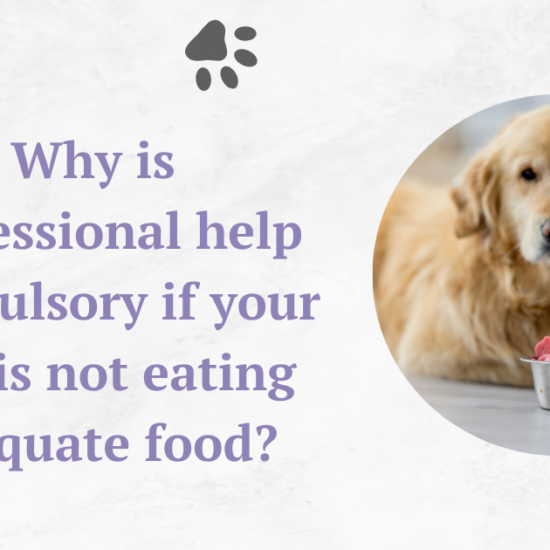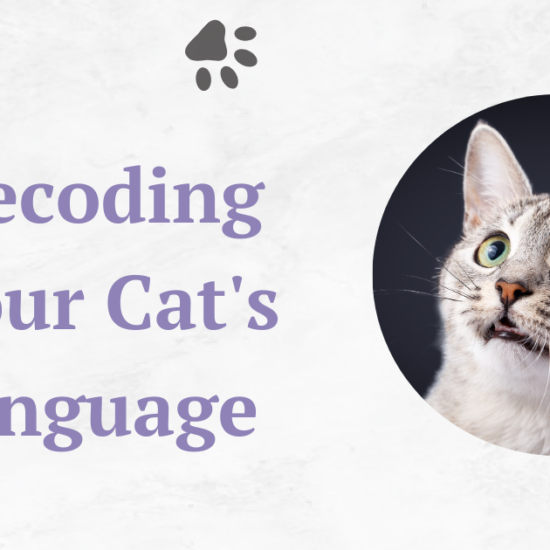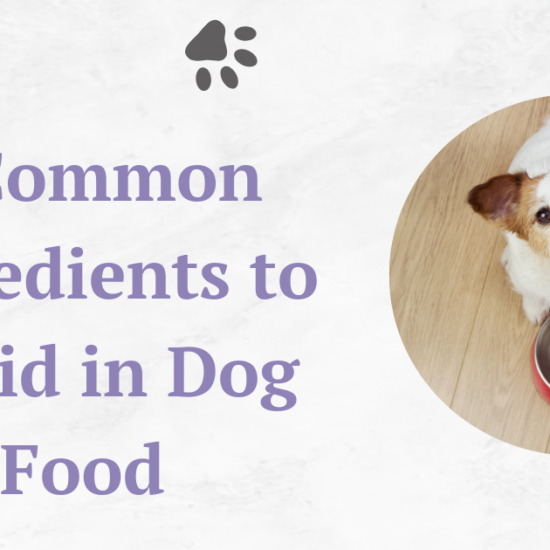Pets are often loved members of our families because they give us company, love, and safety for their whole lives. But just like people, pets will eventually die, and as responsible pet parents, it’s our job to make sure they have the best care possible in their last days. End-of-life care for a pet is hard on the heart, but it’s an important part of pet ownership that needs careful thought and understanding.
Table of Contents
Introduction
In this thorough guide, we’ll go over all the different parts of caring for a pet at the end of its life. We’ll give you information, advice, and support to help you make good choices during this hard time. We will talk about things like how to spot signs of decline, palliative care for pets, pet euthanasia, choices for aftercare, and coping with pet loss. By the end of this piece, you’ll know more about how to give your beloved companion the best care and comfort in their last days.
6 Signs of Pet Aging

As our pets get older, they change in both how they look and how they act. Pet owners need to be aware of these changes and be able to tell the difference between regular aging and signs of illness or decline. With this knowledge, you can help make sure that your beloved pet gets the care and attention it needs as it gets older. Here are 6 signs of pet aging:
- Activity and Energy Levels Go Down: One of the most obvious signs of pet aging is that its activity and energy levels go down. Puppies and kittens are known for having a lot of energy, but as they get bigger, they may play less and sit around more. They may be less likely to want to work out hard and more likely to want to rest.
- Changes in Food and Weight: Your pet’s food and weight can change as it ages. Some older pets may have less of a hunger, which can cause them to lose weight. On the other hand, some may get hungrier and gain weight due to pet aging. Keeping an eye on what your pet eats and how much it weighs can help you spot problems.
- Increased or Decreased Thirst and Urination: Changes in how much water your pet drinks and how often they go to the bathroom can be signs of health problems due to pet aging. Some older pets may drink and pee more often, which could be a sign of a problem like diabetes or kidney disease. On the other hand, some pets may drink less and end up dehydrated.
- Changes in Coat Quality: A pet’s coat can tell a lot about how healthy it is generally. Due to pet aging, their fur may get dull, dry, or breakable. You might see more hair fall out or spots of hair loss. These changes can be caused by a lack of nutrients or an underlying health problem.
- Problems with Movement: As pets get older, their movement often gets worse. When they have arthritis, joint pain, or stiff muscles, it can be hard for them to move around easily. You may notice that your pet is having trouble climbing stairs, jumping on furniture, or doing other things they used to enjoy.
- Changes in Behavior or Mood: Changes in behavior and mood can be minor signs of pet aging or health problems that aren’t as obvious. As pets get older, some of them get more irritable or worried, while others may become more shy or less responsive. It’s very important to pay attention to these changes.
7 Signs You Need to Take Your Pet to the Vet Right Away

Some changes are a normal part of pet aging, but other signs could mean that your pet is in pain or has a health problem. If you notice these signs right away, you can take care of any health problems and make sure your pet stays healthy.
- Vomiting or Diarrhea that Doesn’t Go Away: Vomiting or diarrhea that doesn’t go away for a long time or happens often is not normal in pets. It can be a sign of a number of stomach problems, such as infections, food allergies, or liver diseases.
- Trouble Breathing or Excessive Panting: Trouble breathing, including heavy panting, can be a sign of lung disease, heart disease, or heatstroke. If you notice any changes in how your pet breathes, you should talk to your vet right away.
- Seizures or Sudden Loss of Consciousness: Seizures or sudden loss of consciousness can be scary and may be signs of neurological disorders or other major health problems. When this happens, the animal needs to see a vet right away.
- Pain or Discomfort that Doesn’t Go Away: Pets may not always show pain in a clear way, but stumbling, whining, or getting angry when touched in certain places can be signs of pain. Older pets can get arthritis and other painful diseases.
- Body Swelling or Lumps: You should never ignore odd lumps, bumps, or swellings on your pet’s body. Even though not all lumps are dangerous, some can be, and finding them early is important for treatment to work.
- Problems Eating or Drinking: Changes in the way your pet eats or drinks, like not wanting to eat, having trouble chewing, or drooling a lot, can be signs of teeth problems, oral tumors, or even serious health problems.
- Incontinence or Not Being Able to Control Bodily Functions: Older pets can lose control of their bowels or bladders because of things like urinary tract infections, hormonal changes, or problems with their nerves. To keep your pet comfortable and healthy, you need to take care of these problems right away.
6 Benefits of Regularly Taking Your Pet to the Vet

It’s important to make regular appointments with your vet to check on your pet’s health as they get older. These meetings serve more than one purpose:
- Early Detection of Health Problems: Routine check-ups let your vet spot health problems before they get worse or harder to treat. Early action can make a big difference in how things turn out.
- Assessment of Vital Signs: Your vet will check your pet’s vital signs, such as heart rate, breathing rate, and temperature, to make sure they are within normal levels.
- Changes in Behavior: During these visits, you can talk to your vet about any changes or worries you’ve seen in your pet’s behavior. They can help you figure out how to deal with these changes and fix any problems that might be causing them.
- Care for Their Teeth: Your pet’s dental health is an important part of their general health. Your vet can check your pet’s teeth and tell you if they need to be cleaned or treated.
- Vaccinations and Preventive Care: Vaccinations and preventive care are still needed for older pets to keep them from diseases and parasites. Your vet will make these suggestions based on the age and health of your pet.
- Advice on Nutrition: Older pets usually have different dietary needs than smaller animals. Your vet can tell you what kind of food and medicines will help your pet’s body as it gets older.
Palliative Care for Pets

Palliative care for pets is a kind and important way to manage pain, discomfort, and other symptoms in animals with serious illnesses that are nearing the end of their lives. Even if your pet can’t be cured, this kind of care tries to make the rest of its life as good as possible. It’s a way to give your animal friend comfort, support, and respect in their last days. Let’s talk more about what palliative care for pets is and how it can help.
What is palliative care for pets?
Palliative care for pets is concerned with the whole health of your furry friend. It’s more than just taking care of their physical pain; it also takes care of their social and mental needs. Here are a few important things about palliative care:
4 Important Parts of Palliative Care for Pets
- Pain Management: One of the most important parts of palliative care for pets is giving painkillers. The goal is to make sure that your pet is as relaxed and pain-free as possible. Your vet will give your pet medications that are best for their health, and they will change the dose as needed to make sure they are as comfortable as possible.
- Nutritional Support: A pet’s dietary needs may change as it ages or if it has a long-term sickness. As their food needs change, you may need to change its diet as part of palliative care for pets. Some pets may be given special diets or supplements to help with specific health problems and keep their general health in good shape.
- Hydration: It’s important for your pet’s happiness and health that you make sure they drink enough water. Dehydration can make many health problems worse and make them feel bad. Your vet will tell you how to keep an eye on your pet’s water intake and may suggest fluid therapy if it’s needed.
- Emotional Support: Just like people, pets can feel stressed, anxious, and sad, especially when they are sick or in pain. Palliative care for pets include helping your pet feel less stressed and anxious by giving them mental support. This can be done by spending time with your pet, showing affection, and making the surroundings calm and soothing.
4 Benefits of Palliative Care for Pets at Home

Many pet owners choose to give palliative care in their own homes because it is familiar and comfortable. Home-based palliative care for pets is good for both pets and their owners in a number of ways:
- Creating a Comfortable Space: It’s important to give your pet a quiet, comfortable space with their favorite blankets and toys. This space becomes their safe place, a place where they can rest without worrying about being in a new place. Making their surroundings calm can help them feel a lot better.
- Medication Administration: One of the most important parts of palliative care for pets is giving medicines as your vet tells you to. It’s important to carefully follow your vet’s advice and stick to a regular medication schedule. Some pets may need painkillers, anti-inflammatory drugs, or other medicines to help them deal with their problems.
- Nutritional Support: Your vet may suggest making changes to your pet’s food or giving it certain nutritional supplements to meet its needs. With home-based palliative care for pets, you can make these food changes without any problems. Remember that the food you give your pet is a very important part of keeping it strong and comfortable.
- Frequent Checking: In home-based palliative care, it’s important to check on your pet’s health often. Keep a close eye on your pet. Pay attention to how they act, what they eat, and any changes in their health. Tell your vet right away about anything that worries you. Getting help early can make a big difference in their health and quality of life.
Pet Euthanasia

Euthanasia, which is also called “putting a pet to sleep” or “mercy killing,” is a sensitive subject that pet owners may have to deal with at some point. It is a choice made out of love and care for a beloved pet whose quality of life has gotten much worse and who is suffering too much. This section talks about the hard but important parts of choosing when it’s time for euthanasia, talking to your vet about the process, and knowing the steps of the pet euthanasia procedure.
5 Things that can Lead You to Consider Pet Euthanasia
Saying goodbye to a faithful pet is one of the hardest choices a pet owner can have to make. When a pet’s quality of life has gotten so bad that they are in pain and suffering all the time, pet euthanasia becomes a reasonable choice. To help you make this hard decision, think about the following:
- Pain and Suffering: Check to see if your pet is in pain that can’t be fixed with care or medicine. If they are in pain for a long time, it can hurt their general health and happiness.
- Loss of Mobility: Pay attention to how well your pet can move around and do basic tasks. If they can’t move around and have trouble doing simple things, their quality of life may have gone down a lot.
- Prolonged Loss of Appetite: A pet that won’t eat or drink can become malnourished and thirsty. If they don’t want to eat for a long time, that’s a bad sign because it can make their health get worse.
- Severe Breathing Problems: Breathing problems can be scary for both you and your pet, even if you get help from a doctor. If your pet is having trouble breathing, it could hurt their health and quality of life.
- Painful Life: Think about whether your pet can still do the things it used to like. If they don’t want to play, interact with people, or do other things that used to make them happy, this could mean that their quality of life is getting worse.
It’s important to remember that deciding to put your pet to sleep is, in the end, an act of love and kindness. Its goal is to make sure that your loved one doesn’t have to go through any more pain and has a peaceful death.
Note: There might be affiliate links mentioned here. We may receive a commission if you purchase a product through an affiliate link. There is no additional charge for you. Please do your own research before making any online purchases.
4 Reasons to Consult the Vet Before Pet Euthanasia
When you think pet euthanasia might be the most humane choice for your pet, it’s important to talk to your vet about it in an open and honest way. Your vet is a very important source of advice and help during this tough time. Here are some important things to talk about with your vet about euthanasia:
- Professional Advice: Your vet has the knowledge and experience to give you an unbiased opinion of your pet’s health. They can help you figure out how good your pet’s life is and give you a skilled opinion on whether euthanasia is the kindest choice.
- Process Description: Your vet will tell you everything you need to know about pet euthanasia. This includes giving your pet a sedative to make sure it is calm and comfortable. After that, the euthanasia solution is given, which usually causes deep anesthesia and a quiet death.
- Clarifying Concerns: If you have questions or worries about pet euthanasia, your vet will be able to answer them. It’s normal to worry or have questions, and your vet can give you information to help you make a good choice.
- Compassion and Empathy: Veterinarians and their staff know how hard death can be on people emotionally. They go about the process with care and empathy and try to make sure that both you and your pet are as comfortable as possible.
The Procedure of Pet Euthanasia

Pet euthanasia is a quiet and painless process that is done by a vet. This process is meant to make sure that your pet dies with as little pain as possible and as much dignity as possible. Here’s a summary of how it usually works:
- Using a Tanquilizer: To start the process, your vet will give your pet a tranquilizer. This medicine helps your pet feel calm and comfortable, reducing any stress or worry they may be feeling.
- Giving the Euthanasia Solution: After the sedative, the euthanasia solution is given. This solution typically includes a high dose of an anesthetic drug, which causes deep anesthesia, leading to a painless and peaceful passing. Your pet will slowly go into a deep sleep and then die.
Aftercare: Your vet will talk to you about aftercare options with you after the euthanasia process. Most of the time, these choices are burial or burning. If you decide to cremate your pet, you may be able to get the ashes in an urn or another object.
It’s important to know that putting your pet to sleep is a kind thing to do because you love them. Even though it’s hard to decide, it’s a humane and dignified way to put an end to your pet’s pain when their quality of life has gotten much worse. In the end, it lets your loved one find rest and peace without any more pain or stress.
Pet After Care and Memorialization

Losing a much-loved pet can be a very sad and hard thing to go through. By choosing the right choice for aftercare, pet owners can honor the memory of their furry friends in a way that brings them comfort and closure. In this part, we’ll talk about the different ways to take care of pets after they die, such as burial, cremation, and memorialization.
Burial
Many pet owners choose to bury their pets to give them a final resting place full of love and happy memories. This can be done in a special place, like your garden or a pet cemetery.
3 Things to Consider When Choosing Burial as After Care
If you choose burial as your aftercare choice, here are some important things to think about:
- Local Rules: Before you bury your pet, you should check with your local government to see if there are any rules or limits. Different places may have different rules about the depth of the grave, the use of recyclable materials, or the need to follow zoning laws.
- Choosing a Good Place: Choosing the right place to bury your pet is an important part of the process. Choose a quiet, private place where you can make a memory that means something. Many pet owners like their backyard because it makes them feel close to their pet’s grave and allows them to visit it often.
- Using a Biodegradable Casket or Shroud: If you want to bury your pet in a way that is good for the earth and lasts, think about using a biodegradable casket or shroud. With these choices, your pet can go back to the ground in a natural way, so the burial won’t hurt the environment as much. Biodegradable materials are made to break down over time, which is a gentle and eco-friendly way to return your pet’s remains to the earth.
Having a simple but heartfelt service at the burial can help you and your family say goodbye to your beloved pet and give it a proper send-off. You can say your last goodbyes, share stories, and thank your pet for all the love and friendship they gave you during their life.
Cremation

Cremation is another popular way to take care of a pet’s body after it dies. It gives people flexibility and a variety of options to suit their own tastes.
2 Types of Cremation
There are two main ways to cremate a pet:
Individual Cremation: When your pet is cremented alone, this is called individual cremation. After everything is done, you can choose whether to get their ashes in an urn or some other kind of object. Individual cremation makes sure that you get your pet’s ashes on their own, which lets you make a more personal tribute.
Communal Cremation: In this type of cremation, several pets are burned at the same time. But the ashes are not given back to the people who owned them. This choice is usually cheaper than cremation for each pet, and it may be chosen if keeping each person’s ashes is not important.
How important it is to you to have your pet’s ashes as a keepsake will play a big role in deciding between individual and group cremation. If you’d rather have something real to remember your pet by, individual cremation may be a better choice. Once you have the ashes of your pet, you can think of different ways to remember and honor them.
Memorialization

Making a permanent memorial for your pet is a comforting way to remember and celebrate their life. You can remember the special bond you had with your pet friend and keep their memory alive by putting up a memorial. Here are some possible ways to remember someone:
6 Ways of Memorialization
- Urns and Memorial Plaques: The name and times of your pet can be put on personalized urns and memorial plaques. You can put these real reminders of your pet in a prominent place in your home to keep their memory close to you.
- Memorial Gardens: Planting flowers or trees in your yard to honor your pet is a peaceful and beautiful way to remember them. Over time, these live memorials grow and thrive, showing how much your pet meant to you in the long run.
- Online Memorials: In this digital age, more and more people are making online memorials for their pets. You can share stories, pictures, and memories of your pet on social media or on websites that are just for that purpose. Friends and family can tell you how sorry they are and tell you about the best times they had with your pet.
- Donations and Volunteering: Donations and Volunteering are also important ways to remember your pet. For example, you could give money to animal charities or shelters in their name. You could also help other animals in need by giving your time and energy for free. These acts of kindness are not only a way to remember your pet, but they also carry on the love and kindness they taught you.
- Keepsakes and Jewelry: Some pet owners find it comforting to use a small amount of their pet’s ashes to make a memory or piece of jewelry. With these personalized pieces, you can keep your pet both physically and spiritually close to your heart.
- Art and Crafts: Making art or crafts that are about your pet can be a good way to deal with your sadness and make a lasting memorial. You can paint pictures of your pet, write poems about him or her, or make other things that show how special he or she is.
Memorializing your beloved pet is a very personal process, and there is no right or wrong way to do it. Each choice gives you a different way to honor their memory and find comfort in the way they changed your life. In the end, the goal of aftercare and memorialization is to help you and your family deal with the loss, keep your pet’s memory alive, and find healing during the grief process.
3 Ways of Coping With Pet Loss

The tie between a pet and its owner is special and unique. It is full of love, companionship, and memories that the two have shared. When that link is broken because of the death of a much-loved pet, it can be a very sad and hard time. Coping with pet loss is a process that involves learning, getting help, and finding ways to remember your pet. In this part, we’ll talk about how to deal with grief, get help, and celebrate the life of your pet.
Go Through The Grief (This Too Shall Pass)
Losing a pet is a very personal experience, and it’s important to accept and work through your grief.
5 Stages of Grief When Coping With Pet Loss
Just like when a person dies, losing a pet often goes through a number of stages that can include:
- Denial: In the beginning, it’s normal to refuse to believe that the loss really happened. You might find it hard to accept that your pet is no longer with you.
- Anger: As the truth starts to sink in, you might feel angry. This anger can be aimed at yourself, at other people, or even at your pet for leaving you.
- Bargaining: A lot of people go through a time where they wish they could have done something different or made a deal to get their pet back.
- Depression: During this time, people often feel very sad and empty. You might feel overwhelmed, coping with pet loss can even make you find it hard to do the things you normally do.
- Acceptance: With time and help, you might be able to reach a point of understanding. This doesn’t mean you don’t miss your pet anymore, but it does mean you’ve accepted their loss.
Understanding these steps can help you deal with your grief and realize that your feelings are a normal response to your loss. It’s important to remember that everyone’s grief is different and that not everyone will go through these steps at the same time or in the same order. You might find yourself going through them again and again, or you might have a different experience of them each day.

Look for Help
Losing a pet can make you feel alone and lonely, but you don’t have to go through it alone.
4 Sources of Healing While Coping With Pet Loss
In this hard time, getting help from different places while you are coping with pet loss can bring comfort and understanding:
- Friends and Family: Talk to your friends and family and tell them how you feel. Sharing how you feel and what you remember about your pet can help, and your friends and family can be there for you.
- Support Groups: Many towns and cities have both in-person and online support groups for people who have lost a pet. When you join a support group, you can meet other people who are going through similar things. This can give you a sense of community and understanding.
- Counseling: Professional counselors and therapists who know about sadness and losing a pet can help you sort out your feelings and come up with ways to deal with them. Therapy can give you a safe place to talk about your feelings and get advice on how to deal with grief.
- Pet Loss Hotlines: Some groups offer 24/7 hotlines for people who have lost a pet. These hotlines can listen and give advice on how to deal with the instant feelings that come with losing a pet.
Remember that asking for help is not a sign of weakness but of power. Grief can be exhausting, but talking to other people about how you feel can help ease some of the pain. You should also give yourself time to mourn and not rush the process. Everyone heals at a different pace, and it’s important to respect your own.
Honor Your Pet’s Memory

Celebrating and remembering the life of your pet is an important way to keep their memory alive and find comfort when you’re sad. Here are some ways to remember and honor your favorite pet:
3 Ways to Honor Your Pet’s Memory
- Make a Memorial Scrapbook
Make a memorial scrapbook by putting together pictures, mementos, and your favorite memories of your pet. This keepsake lets you remember happy times with your pet and celebrate the joy they brought into your life.
- Volunteer or Give Money: In honor of your pet, you might want to give back to the animal community. You can help out at an animal shelter, give to a charity for pets, or make a gift in the name of your pet. These good deeds can give you a sense of purpose and keep your pet’s memory of love and kindness alive.
- Adopt or Foster
When you’re ready, opening your heart to another pet in need can be an important way to remember your late pet. Even though you can’t get a new pet to replace the one you lost, taking care of another animal can bring you joy and make you feel like you’re making a difference in the world.
You can also make a special place in your home or yard to honor the memory of your pet. In their honor, you can put a plaque, a favorite toy, or a plant in this spot. It gives people a quiet place to think and remember.
FAQs
What is palliative care for pets and when should it be considered?
Palliative care for pets is a kind way to manage pain, discomfort, and other symptoms in animals with serious illnesses that are nearing the end of their lives. Even if a fix is not possible, it focuses on making your pet’s remaining time as good as possible. It is something to think about if your pet is in constant pain and suffering because of a medical problem that can’t be cured.
What are the most important parts of palliative care for pets?
Palliative care for pets includes managing their pain, helping them eat and drink, and giving them mental support. It is meant to help not only with physical pain, but also with emotional and mental health.
Is palliative care for pets possible at home? If so, what are the benefits of home-based care?
Yes, palliative care for pets is possible at home. Home-based care has the benefit of giving your pet a comfortable, known place to stay, which reduces stress. It also makes it easy to give your pet medicine, help with their diet, and keep a close eye on them.
When is it okay to think about pet euthanasia, and how do I know when it’s time?
You sould think about pet euthanasia when your pet’s quality of life has gotten much worse and they are in constant pain and suffering that you can’t help them with. Long-lasting pain, loss of movement, loss of appetite, trouble breathing, and losing interest in things they used to enjoy are all things to look out for. In the end, you make the choice because you care about your pet.
What should I expect when I talk to my vet about pet euthanasia?
When you talk to your vet about pet euthanasia, you can expect professional advice, a thorough explanation of the process, the chance to talk about any worries or questions you have, and caring support as you make your choice.
Can you explain how pet euthanasia works?
The euthanasia process usually has two main steps. First, a sedative is given to make sure your pet is calm and comfortable. Then, the euthanasia solution is given, which causes deep anesthesia and a quiet death. A veterinarian does the surgery, which is painless and kind.
What is pet aftercare?
You can choose between burial, cremation, and memorialization as aftercare choices after euthanasia. With these choices, you can remember your pet in a way that brings you comfort and peace.
What is the process of coping with pet loss?
Coping with pet loss means recognizing and working through your sadness. It’s important to know that grief comes in many different forms and that getting help from friends, family, support groups, or experts can be very helpful. Creating a memorial that will last, volunteering or giving money in your pet’s name, and adopting or fostering a new pet when you’re ready are all ways to deal with loss.
What are signs of pet aging and how can I tell the difference between regular pet aging and illness?
Signs of pet aging include less activity and energy, changes in appetite and weight, changes in how much they drink and urinate, changes in the quality of their coat, trouble moving around, and changes in their behavior or attitude. To tell the difference between normal pet aging and signs of illness, keep an eye on your pet’s overall health, take it to the vet for frequent checkups, and see a doctor if you notice changes that don’t go away or make you worried.
How can I make a memorial for my pet?
Creating a meaningful memorial for your pet can include things like personalized urns and plaques, planting a memorial garden, making online memorials on social media or pet memorial websites, making donations or volunteering in your pet’s name, making keepsakes or jewelry with some of your pet’s ashes, and doing art or craft projects in your pet’s honor. The choice of how to remember your pet is a personal one, and you can choose the options that best reflect the special bond between you and your pet.
Conclusion
End-of-life care for your pet is difficult and sad, but it’s also a chance to show your pet the love and kindness they deserve in their last days. You can make sure that your pet’s trip over the rainbow bridge is as peaceful and comfortable as possible by watching for signs of illness, giving palliative care, and making an informed choice about euthanasia and aftercare.
Also, dealing with the death of a pet is a very personal process, and getting help from friends, family, support groups, or professionals is an important part of getting better. Remember that the love and memories you shared with your pet will stay with you for a long time, letting their spirit live on in your heart.
In the end, end-of-life care for pets is a sign of the special bond between people and their animal friends, and it’s a chance to give them the love and care they’ve given us all their lives.












